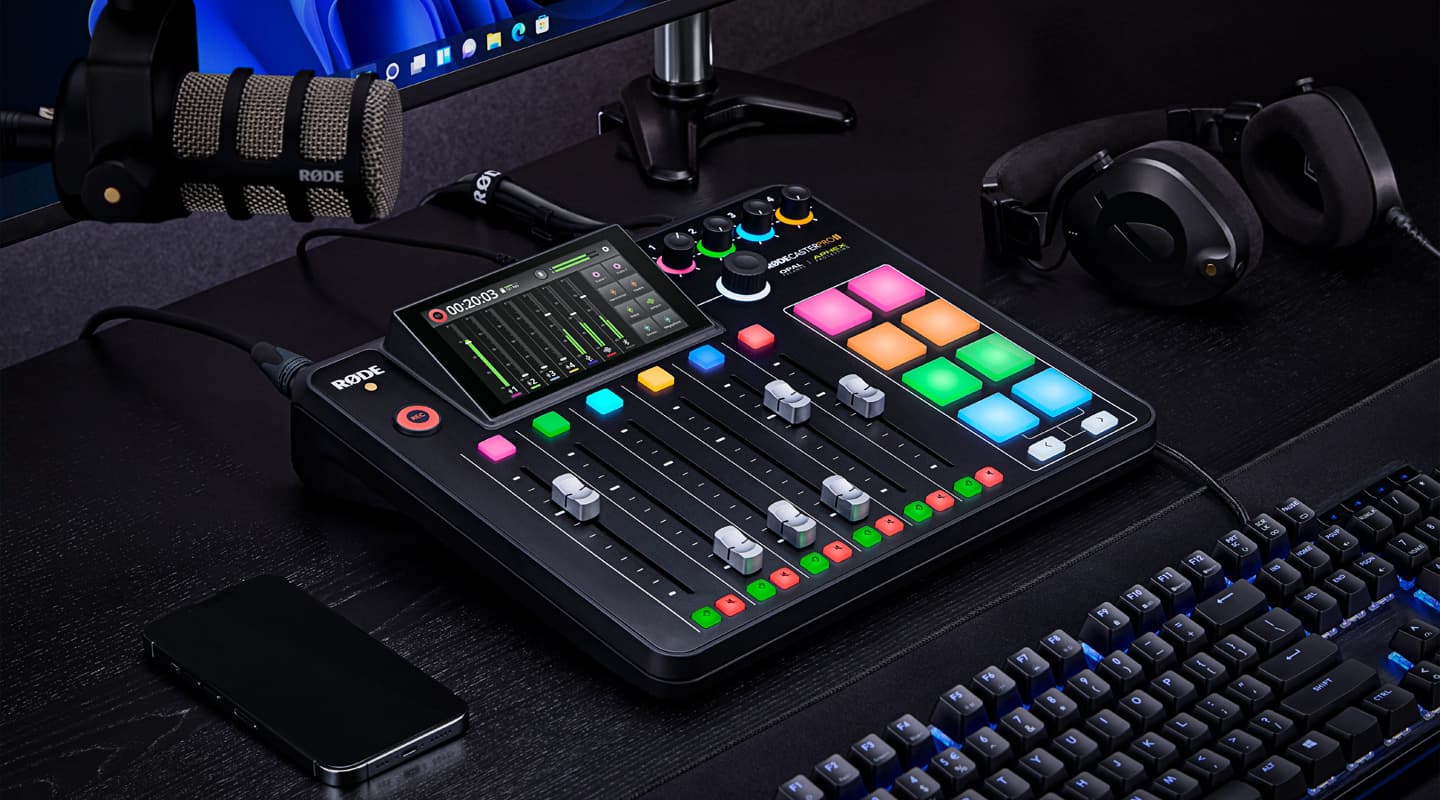
Review: Røde RødeCaster Pro II
Despite the family resemblance, the RødeCaster Pro II is a gigantic leap ahead of its predecessor.
Røde has a habit of designing products to fill needs even before the market has worked out the need exists.
The introduction of the RødeCaster Pro in December 2018 was no exception – the do-it-all podcasting appliance basically forged a new product category which competitors scrambled to actually compete in. The second generation of this groundbreaking product is now available, and it’s undergone far more than a mere facelift.
What captivated me (and everyone else) about the O.G. RødeCaster Pro was how ‘right’ it felt to have a unit that’s aimed squarely at podcasters take care of all the technical needs of running a podcast. Most of the time a fully-fledged DAW rig is overkill for recording a couple of speakers. In fact, by the time you’ve launched your computer, set up a DAW session, checked the latency, set up headphone mixes and figured out how to bring in audio from your guest on a Zoom call, you were hardly in the headspace to have a meaningful discussion anyway. The RødeCaster Pro neatly streamlined the process in a way that made us all go ‘duh!’
Røde’s second take doesn’t deviate from this niche lane. The RødeCaster Pro II just adds turbochargers so you can fly down the lane more quickly.
Each fader is assignable rather than fixed. Audio processors offer granular control. Built-in processing is now handled by a quad-core audio engine for low latency real-time effects. Max preamp gain goes from 55dB to 76dB. The SMART pads now have eight banks and can do much more than trigger audio clips. Bluetooth connectivity is wider band for better quality. Dual USB-C interfaces allow two digital devices to be connected simultaneously. A new rotary encoder enhances user operation. Everything is colour coded. A lot has changed.
FADING AWAY
Fewer faders is, to me, one of the less exciting differences – you get six on the RødeCaster Pro II as opposed to eight on the first generation. The input count hasn’t dropped, though. With nine channels in total, six of them can be assigned to the physical faders leaving the other three to on-screen ‘virtual faders’. Adjusting a virtual fader means tapping that channel on the screen and turning the encoder. Perhaps this decision was to free up physical space on the console surface, and it’ll only be a gripe for those who might regularly max out all nine inputs on a show. My preference is to have a physical fader for every channel – there’s less accidental fader moves and peering at the screen that way.
Setting up channel/fader pairings is a straightforward drag ’n’ drop process via the 5.5-inch touchscreen which, by the way, is much nicer to use with the extra tilt. Haptic feedback on the touchscreen is not much more than a low beep which creates a buzz under your fingertip; in my opinion it doesn’t add much to the interactive experience.
However, Røde has achieved a fantastic revamp of the on-screen navigation and general user interface. I do feel like it’s more intuitive and better laid out despite feeling slightly laggy at times. All nine channels are displayed on the Home screen, the first six being in order of fader assignment and the final three being the virtual faders. Like with most digital mixing consoles, you access deeper control by selecting a channel, which in the case of the RødeCaster Pro II is done by either pressing the channel’s backlit rubber button or touching the on-screen fader. This calls up the ‘VoxLab’ GUI.
Mics are gained up in this view – there are no physical gain knobs. The 76dB of gain on the new ‘Revolution’ Class A preamps is a thing to behold. I was pleased with how quiet and full these preamps sound on all manner of gain-hungry microphones. Pull out your SM7Bs and RE20s and ditch the Cloudlifters! Heck, with 76dB of clean gain you can stick a ribbon mic on the softest voice and still pull a good level. I only noticed hiss poking through at the absolute top end of the gain range.
NEED TO KNOW
Røde RødeCaster Pro II
Integrated Audio Production Studio
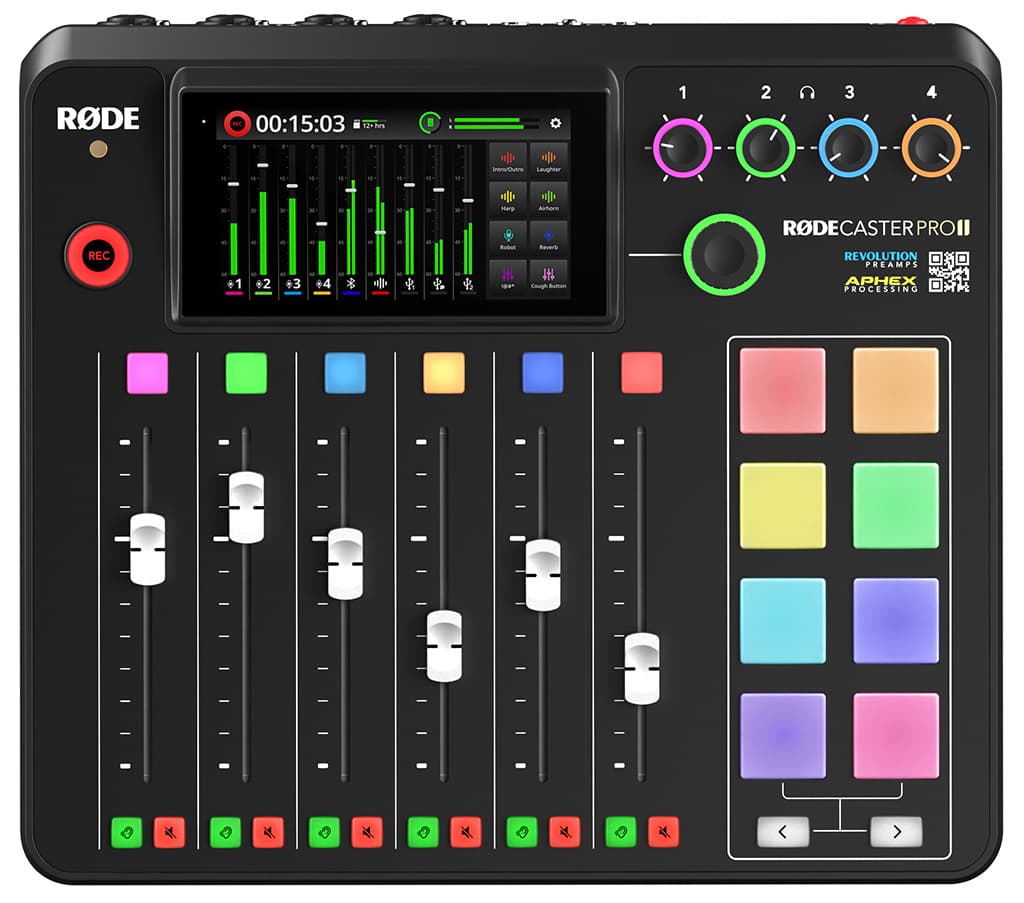
EFFECTS GALORE
Three presets are on offer across each physical input based on the input type (Line, Instrument, PodMic, Procaster, SM7B, RE20, Condenser, etc). Where I could test drive the microphone presets with their corresponding models, I found them to do a good job applying a complementary EQ curve to each model. Of course, if you’d rather be in control you can opt to go preset-less. Phantom power and phase are both individually switchable per channel.
Røde continues to leverage the IP it acquired in Aphex by way of high quality DSP. VoxLab lets you be as hands-on or hands-off as you like in treating input signals; the latter involves using one-touch presets (Neutral, Podcast Studio or Broadcast) which alter three simplified controls: Depth, Sparkle and Punch.
I tend to prefer a more nitty gritty approach. Many will be pleased that Røde has really taken the lid off processor control in the RødeCaster Pro II. Everything is tweakable. The high-pass filter extends to 200Hz and has four slope options. Both the De-Esser and Noise Gate have six settings each to dial in ultra-precise settings for a particular mic/presenter combination. The compressor is equally customisable. Sonically, it has a voice-friendly personality and can handle everything from gentle smoothing to in-your-face punch. The three-band sweepable equaliser lacks a Q control but it’s nice that you can individually activate each band. The icing on the processing cake is the Aphex Big Bottom/Aural Exciter combo which completes the chain before the Pan control. All up, there’s undoubtedly more than enough sonic crafting potential inside the RødeCaster Pro II to satisfy the majority of podcasters’ needs.
Voice transforming effects are a quirky addition which, at least initially, will yield some amusement. Røde has thrown in a pitch shifter (±12 semitones), a few varieties of robot voices, and a voice disguising effect. Reverb and echo are also new arrivals. Each can be applied to any or all of the four physical inputs only. How useful these are will depend on the style of your podcast. My takeaway (apart from the free entertainment) was that the quad-core CPU does a commendable job chugging through all that processing with only a modest latency.
STORAGE & TRANSFER
A fantastic extra feature of the RødeCaster Pro II is the ability to record audio to a USB hard drive. It’s even possible to record to microSD and USB hard drive simultaneously in either multitrack or stereo mixdown modes. Multitrack recording to a computer can be pre- or post-fader and with or without effects – it’s a great way to capture a full show if you want to perform a finer DAW mix later on.
4GB of built-in storage is available for SMART pad audio files. This is plenty to hold a few shows’ worth of intro/outro music, ads, jingles, etc. Transferring data is mostly the same approach as the original, with a few add-ons. Grab individual podcasts via USB-C or stick the microSD into a card reader. Export recordings via Røde Central software where you have more format options and can manage SMART pad audio files. Røde has created presets with tailored settings for a number of streaming platforms such as Spotify, iTunes, Anchor and SoundCloud.
Røde has achieved a fantastic revamp of the on-screen navigation and general user interface
CONNECTED
Firmware updates on the original RødeCaster Pro were a point of endless delight. Each update saw Røde pull significantly more functionality, which made customers extremely happy given their unit kept increasing in its value proposition for no extra cost. Now, thanks to onboard wi-fi, those beloved firmware updates can be installed wirelessly! You can still connect to a computer and use Røde Central for updates but after trying the single-press update over wi-fi I know I won’t be bothering to pull out a laptop to achieve the same result. The ethernet port provides another option for tapping into your local network.
Speaking of connections, a subtle yet valuable difference is the four Neutrik combo (XLR/jack) connectors which replace the XLR-only inputs of the original. This opens up the possibility of connecting instruments (guitars, basses) and line level sources (keyboards, synths, mixers) directly to the RødeCaster Pro II. This step beyond having only microphone inputs turns the RødeCaster Pro II into more than a podcast-specific device. I wouldn’t buy it to record my band – podcasting and spoken word applications are still very much the RødeCaster Pro II’s forte – but it’s nice knowing the functionality exists if musical inspiration strikes and you don’t have another tracking option handy.
REMOTE PARTICIPANTS
So you get four physical inputs. But in our digitally connected world, the RødeCaster Pro II doesn’t limit podcasts to only people in the same room. All manner of calls can be ported into the unit.
With your computer connected to the USB1 port, open Audio Settings and you’ll notice two discrete interface options. The first (USB1 Main) is a standard interface that is configurable as a stereo or multitrack recording stream, while the second (USB1 Chat) is a separate virtual USB audio device. Both appear as unique channels in the RødeCaster Pro II which means you can, for example, have music from Spotify entering on one fader and a guest’s voice from a Zoom call on another, but both from the same computer. Audio travels the other way too, of course. USB1 Main carries the 16-out multitrack stream, while USB1 Chat can only pass the feed back down the line.
Phone calls can be piped in via Bluetooth or the second physical USB-C connector (USB2) which is optimised for smartphones. MFi certification provides plug ’n’ play compatibility with iOS devices. The full gamut of Aphex processing can be applied to USB1, USB1 Chat, USB2 and Bluetooth inputs.
A brand new update from Røde lets you toggle between main mix, mix-minus, or custom routing for each of the USB and Bluetooth channels, allowing you to select and customise which inputs are included and excluded, giving you full control over what each audio channel is hearing.
Live streamers are well taken care of with this level of configurability. Essentially it means you have more feeds at your disposal, and more configurability over each one.

SMART PADS
Two ‘Bank’ buttons sit underneath the eight sample pads on the RødeCaster Pro II – another key distinguisher from generation one. Not only do you get eight banks, giving you access to a total of 64 colour-codable SMART pads at any one time, but Røde has expanded their functionality beyond simply triggering audio bytes.
Activating automated mixer functions, for example. A SMART pad can engage things like global fade ins or fade outs with variable durations with the option of the host mic being immune to fades. ‘Trash Talk’ mutes the audio output to remote guests. ‘Back Channel’ creates a separate mix to allow communication between specified input channels. ‘Censor’ plays a beep tone or custom audio file while muting all outputs. ‘Ducking’ temporarily lowers the level of all channels except the host. They’re all useful actions – the type of thing many podcasters won’t know they needed but will soon struggle to live without – and it feels surprisingly natural to trigger these actions using the pads.
The wacky voice effects, reverb and echo are also switched on and off using the SMART pads. Then there’s the clever incorporation of MIDI commands where a pad can send a MIDI Note or CC signal back to a software application; potentially a huge time saver to promptly initiate live streaming functions or DAW control. Each pad can be momentary or latching. A clear readout of the current SMART pad bank’s functions lives permanently on the right hand side of the Home display screen.
WORTHY UPGRADE
There’s plenty to write about with the RødeCaster Pro II. Better preamps, new SMART pads, a nicer interface, more USB connectivity, hard drive recording, line and instrument connectivity, wi-fi-enabled firmware updates… the list is comprehensive.
I’ve known some companies to release ‘second generation’ versions of their products that are thoroughly underwhelming. In the case of Røde here, it’s the precise opposite — this is a generational leap forward. What’s more, we can expect Røde to deliver regular firmware updates that’ll unlock even more potential from the device than you could have anticipated — which sweetens the deal to no end, in my book. But even if you pay for exactly what the RødeCaster Pro II can give you right now, rest assured you won’t be disappointed. It’s the most comprehensive, feature-packed and versatile podcasting solution on the market.






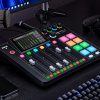

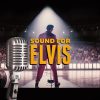
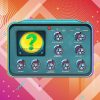














RESPONSES